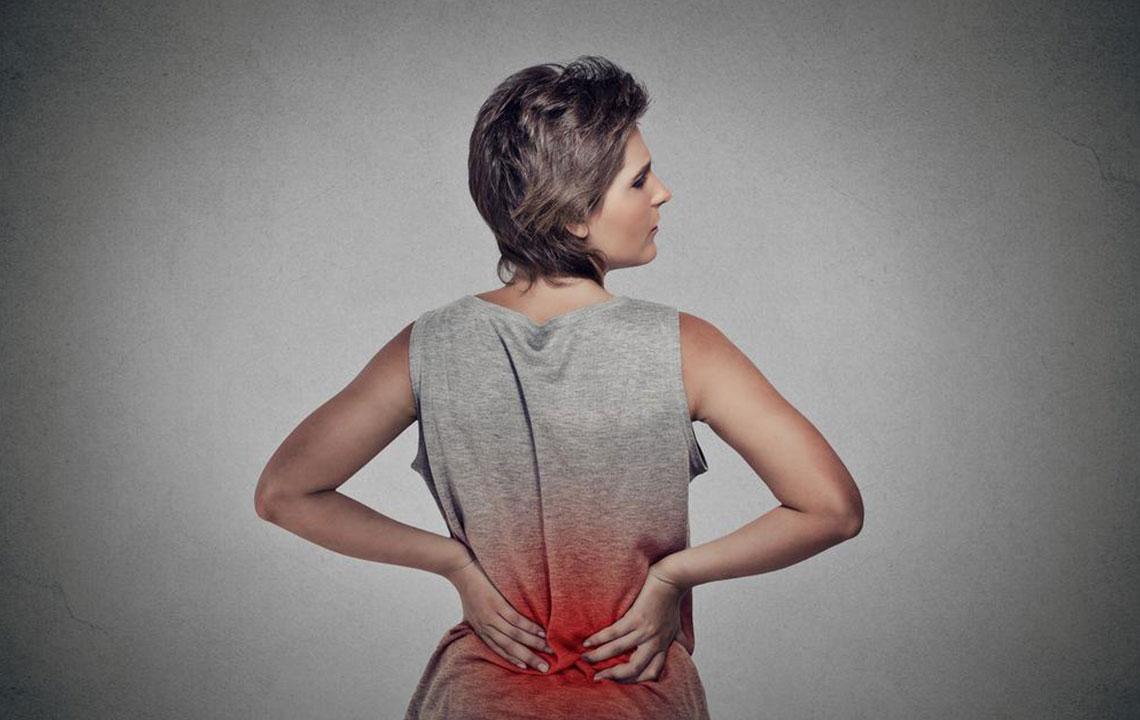Treating Lower Back Pain Through Exercises

Medically referred as ‘lumbar spine,’ the lower back is a complex design of interconnected bones, nerves, ligaments, muscles, and joints. The lumbar spine provides structural support to the body, protect certain body tissues, and help with movement. Lower back pain is quite common in adults.
Symptoms
The common symptoms displayed when there is a pain in the lower back include:
- A dull, aching pain
- Pain gets worse after you’re in a sitting position for a long time
- Pain that moves down to the buttocks, legs, and feet
- Pain that’s very bad the moment you wake up and eases as you move around
- Pain that decreases when you change positions
Causes
Lower back pain can be caused due to any number of factors. Certain existing medical conditions and illnesses also can cause pain in the lower back. Lower back pain can be caused due to muscle or ligament strain, herniation (disk disease), and spinal stenosis (a tight spinal cord).
Other causes include degenerative joint disease, osteoporosis with a compression fracture, and spondylolisthesis. Sometimes, pain in the organs can also cause lower back pain.
Treatment
The line of treatment is based on identifying the underlying cause of back pain. Mild to moderate pain in the lower back which is caused due to stress and exertion subsides on its own after you take rest. If the pain is chronic, then you need to visit a doctor for pain management. It involves medication plus enlisting the services of a physical therapist to chart an exercise schedule.
Exercises For Lower Back Pain
Staying active is the best way to combat lower back pain. Exercising on a daily basis helps to reduce back pain by releasing the stiffness, soreness and the tension in the lower back.
Chart your exercise routine by incorporating the following lower back pain exercises. Start off slowly and gradually increase the repetitions.
Bottom To Heel Stretch
Performing this type of exercise helps to stretch and mobilize the spine. Kneel on all fours and take the knees under your hips. The hands should be under the shoulders. Arch the back and stretch the neck. The shoulders should be drawn back, and hands stretched forward.
Next, move your bottom backward slowly, retaining the natural curve of the spine. Hold on to the stretch and get back to the starting position. Perform 8 to 10 repetitions. A caution, do not overstretch.
Back Extensions
These exercises are designed to stretch and mobilize the spine backward. Lie down on your stomach and raise up on your elbows. Stretch your spine, holding the shoulders back and the neck long. With the neck stretched long, arch the back upwards, by pushing the hands down.
As the back arches, you will feel a stretch in the stomach. Breathe in, hold the arched position for 10 seconds and get back to the starting position. Make sure that your hips touch the ground and the neck does not arch backward. Perform 8 to 10 repetitions.
Knee Rolls
These exercises are designed to increase the suppleness of the lower back muscles. Lie on your back with a cushion to support your head. Bend the knees and hold them together. Relax the upper body. Roll the knees over to one side. Roll till the pelvis. The shoulders must remain flat on the floor. Hold this position, take a deep breath and return to the initial position. Do the repetitions 8 to 10 times, alternating sides.
Deep Abdominal Strengthening Exercise
These exercises strengthen the deep supporting muscles around the spine. With your back on the floor and resting your head on a cushion, bend your knees, feet flat on the ground, hip-width apart. Relaxing the upper body, breathe out. When you do this, draw up the pelvis and the lower abdominal muscles. You should be able to feel the upward pull in these muscles. Hold the contraction, while breathing from your abdomen, lasting 5 to 10 breaths. Relax the body. Perform five repetitions.
Only the abdominal and pelvic muscles are to be worked on, keeping the neck, shoulders, and legs relaxed. A caution, don’t pull the ab muscles with excessive strength. Apply a light pull.
Pelvic Tilts
Lie down on your back, with a cushion supporting the head. Keep the knees bent, feet straight, hip-width apart. Relax the upper body with the chin tucked in. Position your lower back such that it is flat on the floor. Now, contract the stomach muscles. Tilt the pelvis towards the heels. You can feel the back arching. With the back muscles contracting, get back to the starting position.
The pelvis must be tilted back and forth in a rocking motion 5 to 10 times.
Maintaining the right posture while sitting, sleeping and walking can go a long way in preventing lower back pain. Implement these lower back pain exercises for a healthy you, However, if the pain persists, consult a doctor.


